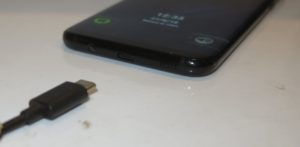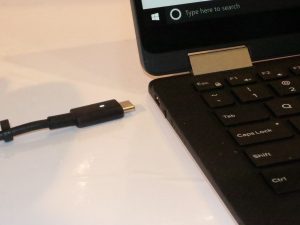Article

Newer Android smartphones and tablets with USB-C ports will need to be compliant with USB Power Delivery
Google now requires Digital Wellbeing and USB-C PD charging standard for new Android phones | The Verge
Google will require ALL Android devices with USB-C to support USB-PD | AusDroid
Google requires new Android devices with Type-C ports to not break USB-PD compatibility | XDA Developers
What Is USB-PD And Why Is Google Enforcing It? | Gizmodo
USB Power Delivery explained | Android Authority
My Comments
A feature that is asked for with smartphones and tablets is to support fast battery charging as well as the ability to operate the mobile device on external power while it charges.

… to have the same kind of USB-C power-supply connectivity as this Dell XPS 13 2-in-1 Ultrabook
Typically this was satisfied by USB battery chargers working up to 5V 2.4A and feeding the device from a USB Type-A socket to a USB Micro-B, USB-C or Apple Lightning (MFi) port. As well, chipset manufacturers like Qualcomm introduced proprietary fast-charge solutions that different phone manufacturers implemented. These required the use of chargers that had the corresponding chipset circuitry and often they were offered by the phone’s manufacturer as a supplied or “official” accessory.
But Google are now requiring that Android devices that have a USB-C connection are to fully support USB Power Delivery. This was initially a recommended feature but from September 2019 it will be a mandatory feature for new Android smartphones to gain full software support like Google Play Services and the Google Play Store.
USB Power Delivery is already implemented as the power source for laptops like recent iterations of the Dell XPS 13 or Apple MacBook Air or as a power-source option for USB-C-equipped laptops like the Dell Inspiron 14 5000 2-in-1 convertible laptop. This is augmented with the availability of power-supply devices working to this standard such as battery packs or USB-C monitors.
Here, Google wants to implement the USB-PD standard for the Android platform for a number of reasons. Here USB-PD implements a standard voltage-and-current ladder to supply power to the device according to what the power-supply device can offer and what the device can take. Therefore an Android device manufacturer can design a device to take the right power level to, perhaps, facilitate fast-charging or high-performance operation while connected to a USB-PD power source.
As well, the standard is a known common standard that is managed by USB Implementers Forum rather than a device or chipset vendor for the benefit of the industry. This puts less pressure on power-supply vendors to cater to different proprietary fast-charging requirements.
This standard will also accelerate the availability of USB-PD-compliant power-supply designs for every sort of application and at price points that appeal to everyone. It can also encourage innovation when it comes to power-supply design whether this is for one or more devices or to work from an internal battery, 100-250V AC mains power or 12-24V DC vehicle/marine/aircraft power.
Householders won’t even have to worry about the number of USB chargers available that will charge their mobile device quickly. As well, the environment will benefit because of the reduced number of useable chargers going to landfill but the reality with these chargers is that they are still kept available as “spare” or “convenience” chargers until they fail to function.
USB Power Delivery can also allow for a mobile device to be a power source for a peripheral like a portable hard disk or a USB digital noise-cancelling headset. This may require the mobile device to be equipped with two USB-C sockets if it is to be of use with people who need to be able to run their devices from external power.
Personally, I could see this happening that someone will engineer a cost-effective way to have a USB-PD-compliant power supply to simply be a general-purpose power supply. This will end up with this technology being used simply to power all sorts of lighting, novelties and other devices, like what is happening with the current USB specification.
Google’s approach with mandating the use of USB Power Delivery for all Android mobile devices equipped with USB-C connectors will keep up Android’s fame as the mobile platform built on common open standards.





